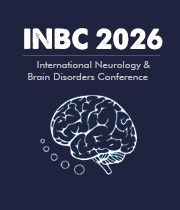Electroencephalography (EEG)
Electroencephalography (EEG) is a type of medical test that detects electrical activity in the brain. The EEG measures and records these electrical impulses on a device that looks like a computer monitor. These signals are picked up by sensors, called electrodes, which are placed on the scalp. The signals are then transformed into graphs, called electroencephalographs, which are used to diagnose brain conditions and check for signs of brain disease or injury. EEG can measure brainwaves, which are the electrical signals that indicate neural activity. These brainwaves have different frequencies and therefore can provide useful information about the various functions of the brain. For example, alpha waves, which have a frequency of 8 to 12 Hz, are associated with relaxation and dreaming, while beta waves, which have a frequency of 13 to 30 Hz, are associated with alertness and concentration. EEG has many medical applications. It is most commonly used to detect seizures and other underlying neurological conditions such as epilepsy or brain tumors. It can also be used to diagnose dementia, check for sleep disorders, or observe brain activity after a stroke. Its non-invasive nature makes it a particularly useful tool for monitoring the status of a patient. Due to its non-invasive nature, EEG is a safe procedure and has few risks. The electrodes are placed on the scalp and do not cause any pain or discomfort. However, the EEG procedure may be uncomfortable for people who suffer from claustrophobia, as the electrodes must be placed very close together. Overall, EEG is an important tool for identifying and diagnosing brain conditions. The test itself is easy to administer and is relatively safe. Although its results may vary, EEG results are reliable and can be used to gain valuable insight into a person’s mental and physical health.

Joe Sam Robinson
Mercer University, United States
Robert B Slocum
University of Kentucky HealthCare, United States
George Diaz
Memorial Healthcare Systems, United States
Daniel Curry
Texas Children’s Hospital, United States
Zhenhuan Liu
Guangzhou University Chinese Medicine, China
Kiran Ghotra
Lake Erie College of Osteopathic Medicine, United States




Title : Atypical presentation of Juvenile myoclonic epilepsy in a 16-year-old female: A Case Report
George Diaz, Memorial Healthcare Systems, United States
Title : What we don’t know about hydrocephalus and It’s management
Daniel Curry, Texas Children’s Hospital, United States
Title : Artificial intelligence-driven DWI and FLAIR for the detection of early stroke changes: A systematic review
Shari L Guerra, The Medical City, Philippines
Title : Mapping neuroplasticity in occupational therapy: Evidence-based interventions with measurable neural outcomes
Jessica Marchant, Texas Woman's University, United States
Title : Non-pharmacologic management of orthostatic hypotension in inpatient rehabilitation: A quality improvement initiative
Laura Steakin, Rehabilitation Institute at Sinai, United States
Title : Non-pharmacologic management of orthostatic hypotension in inpatient rehabilitation: A quality improvement initiative
Mackenzie Weber, Rehabilitation Institute at Sinai, United States